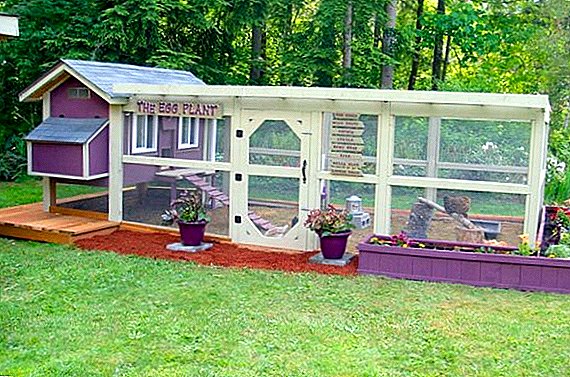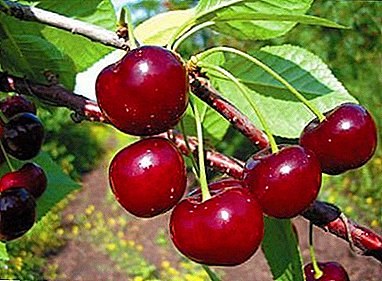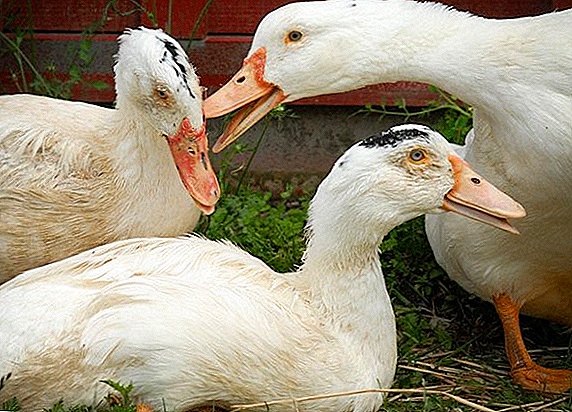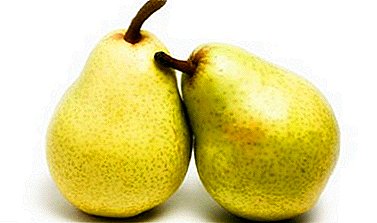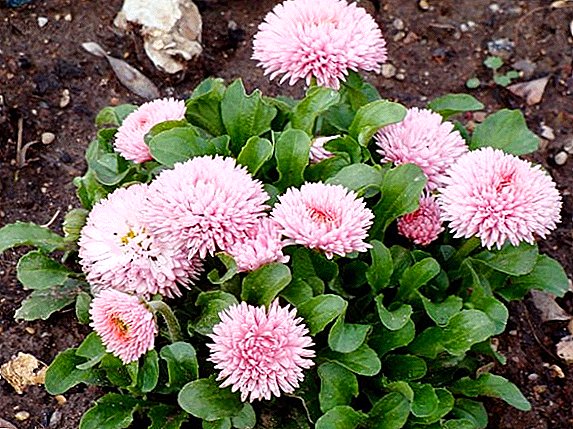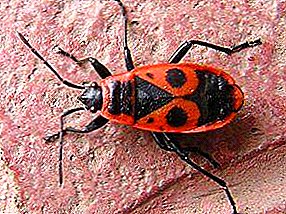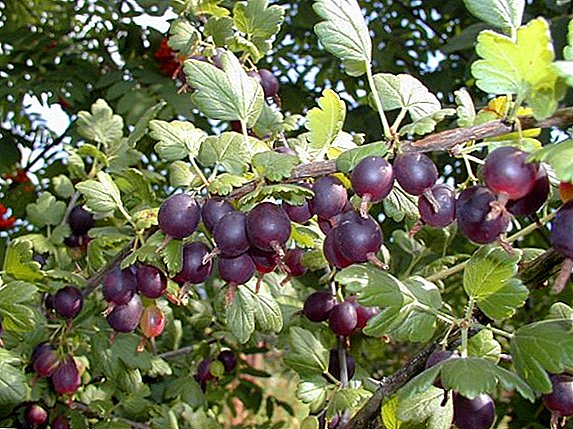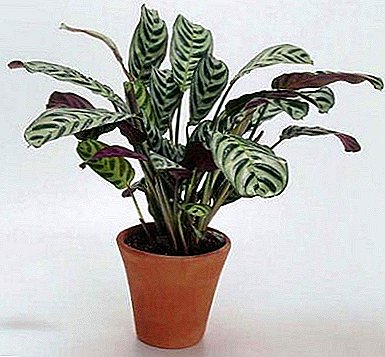
The unusual and variety of leaves of the original color of this plant made him a welcome guest in the collections of fans of indoor plants.
Unlike other members of the family of maranths, the plant is less demanding of the conditions of detention, which facilitates the care of Ktenante at home.
All about Ktenante you will learn in this article.
Plant description
This perennial herb came to our country from South America and Brazilwhere it grows in tropical forests. At home, Ktenante is two meters tall, at room temperature. height is limited to 80-90 cm.
Ktenante has large oblong leaves, decorated with fancy drawings on a green background, which also complement the pink and white streaks or blotches of beige or silver. The reverse side of the leaves is maroon. She becomes prominent in the evenings when the ctenant lifts the leaves up and folds them into a tight bouquet.
The beauty of the leaves compensates for the inconspicuous flowering of the ctenants. It blooms in the summer with large spikelets covered with bracts.
A photo
The following are photos of Ktenantes:



Home grown species
In nature, there are dozens of plant species, the following varieties are grown in indoor floriculture:
- Burlet Marx. The leaves of this species are light green with sharply highlighted dark green stripes in the form of a Christmas tree. The reverse side of the sheet is purple-violet. Blossoms in small flowers, gathered in scallops.
- Lubbers. Height - up to 75cm. Light green leaves, on which cream brush strokes are applied as if with a wide brush. The seamy side of the leaves is dark green.
- Oppenheim. The most popular variety in home floriculture. It grows up to a meter. The leaves are pointed, oblong, with velvety, with green and silver stripes, purple from the inside.
- Compressed. Ovoid, large leaves with pointed ends. The most durable and resistant to some errors in the content.
Growing rules
Ktenanta care at home does not require special, but some features of the cultivation must be taken into account.
At home, “Ktenant” grows in a forested, marshy area, where it is warm and damp. Therefore, to grow her house you need to create approximately similar conditions.
Temperature and light
In the summer you need a flower temperature 22-25, in winter - 16-20. Ktenanta transfers cold, but not below 10 degrees.
The plant needs a bright diffused light. Light shadow Ktenante transfers. But it is not recommended to grow it in rooms of the northern direction. It is optimal to keep it in rooms with a west-east direction.
IMPORTANT! If you keep the plant in the south, watch it, keep it from the sun, otherwise the leaves will start to burn.
Watering and moisture
 Ktenant moisture-loving, so you need to water it regularly. But do not make a swamp in a pot, the soil should be slightly damp. In winter, watering does not stop, but only reduce the frequency. Water for irrigation take soft, filtered or defended.
Ktenant moisture-loving, so you need to water it regularly. But do not make a swamp in a pot, the soil should be slightly damp. In winter, watering does not stop, but only reduce the frequency. Water for irrigation take soft, filtered or defended.
Humidity of the plant is necessary in the range of 70-80%. To maintain it, it is advisable to use humidifiers, spraying. If the room is hot and dry at the same time - the plant will die.
About the lack of moisture in the air can signal folded in the daytime leaves. All the antics lift and fold the leaves in the evening hours.
But if your flower does not lower them during the day, it means that it does not have enough moisture. In this way, your Ktenant is trying to retain moisture in the leaves.
Top dressing
Every two weeks during the growing season, Ktenant is watered with mineral mixtures for decorative leafy plants. In winter, fertilizing is reduced to once every 50-60 days.
IMPORTANT! Avoid fertilizers with a high content of nitrogen and calcium, their plants can not tolerate.
Soil requirements and transplant rules
The plant will feel good only in loose, slightly acidic soil. For planting take an equal amount of leaf, sod land and peat.
IMPORTANT! Ensure that there is no lime in the soil; Ktenant does not tolerate it.
Young plants should be transplanted in mid-spring annually, adults - once in 3-5 years. The roots of the plant are very fragile, so care must be taken when transplanting. Land in a pot before removing the flower must be watered well, so that it is soaked, and the roots are easily freed. It is important when removing from the ground not to tear off small roots, otherwise the plant will not survive well.
Pot for planting need to choose a wide and not too high. For young copies A new pot should be 3-4 centimeters wider than the previous one. With a rare transplant, pick up a larger plant for an adult plant so that the roots have room to grow for several years. Be sure to put a high drainage layer (1/4 of height) on the bottom of the pot.
TIP! It is better to give preference when planting to ceramic ware, as thanks to the porous material, it is easier to protect the plant from overwetting. True, and watering will need more frequent than when using plastic utensils.
Cover the soil with fine sand. Do not feed her 30 days.
IMPORTANT! Do not rush to replant Ktenant immediately after purchase, let her acclimatize in the house for a couple of weeks. If the purchase occurred in the winter, the transfer is better to postpone until March.
Pruning
 In the formation of the crown Ktenanta does not need. It is only necessary to periodically remove dry and beginning to die leaves.
In the formation of the crown Ktenanta does not need. It is only necessary to periodically remove dry and beginning to die leaves.
We will tell about whether it is necessary to put supports for the Ctenants.
Indeed, when growing tall species, special flower props and trellis can be used to preserve the shape. Stalks are gently tied to them so that they do not lean, and the bush does not fall apart.
Breeding
For reproduction Ktenantes there are two ways:
- Cuttings. Produced by apical shoots with a length of 10 centimeters. Favorable time is spring. A handle with two leaves is placed in water and covered with plastic wrap. The roots will appear after about 6 weeks, after which the sprout can be planted in the soil.
- Division. The adult shrub when transplanting is divided into two or three parts and is seated. Before the appearance of new leaves of the plant must be kept under transparent caps.
Growing from seed
Sowing seeds Ktenantes rather troublesome. In order for them to germinate, they need to create special conditions for them. Sow them in a flat dish in the peat-sand mixture. For germination seeds need a constant soil temperature of at least 20 degrees, so the tank needs heating.
Also, crops should always be kept wet, but there should be no excess moisture in the tank, otherwise mold will appear and the crops will die. Capacity must be covered with glass and put in a bright place.
IMPORTANT! Make sure that the direct rays of the sun do not fall on the crops, otherwise the seeds will overheat and die.
Sprouts should appear after 25-30 days. In separate pots and soil they can be planted at the age of 30-40 days.
Diseases and maintenance issues
 All diseases and troubles that arise during cultivation are related to the fact that the Ctenant is contained in inappropriate conditions:
All diseases and troubles that arise during cultivation are related to the fact that the Ctenant is contained in inappropriate conditions:
- Low temperature and high humidity manifested by the fact that the stems begin to sag.
- Lack of moisture - curling of leaves and spots on them.
- If the flower lacks nutrients, leaves will turn yellowish brown.
- Lack of sunlight will appear in the form of loss of the picturesque color of the leaves. If the lighting is not enough, the leaves become small.
- From the dry air in the apartment leaves begin to turn yellow and fall off. As soon as you notice the first yellowness on the leaves, immediately begin to humidify the air, spray the plant. Place the pot in a tray filled with stones or moss. Pour water on them, but make sure that it does not reach the bottom of the pot.
Pests
Ktenante flower can be affected by such pests as:
- Shchitovka. Brown dots appear on the leaves. To fight insects you need by washing the leaves with soap and water. After that, the plant must be treated with insecticide.
- Spider mite Appears if the plant is kept in a dry place. A white, filament-like raid appears on the leaflets. Leaves should be wiped with a weak alcohol solution and treated with Fitoverm or Fufanon.
Ktenante - beautiful interior decoration of any style. To admire her original leaves, follow all rules of care for her.


